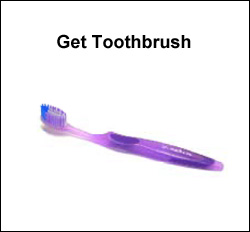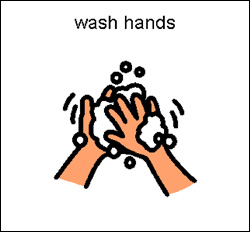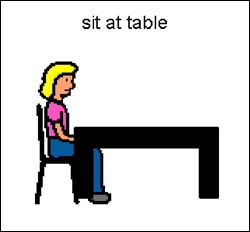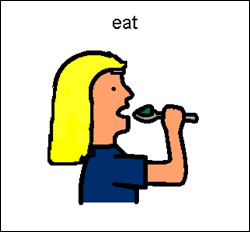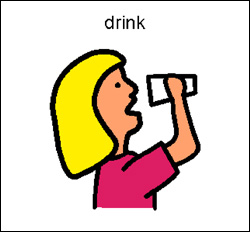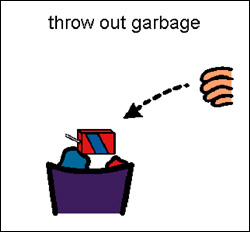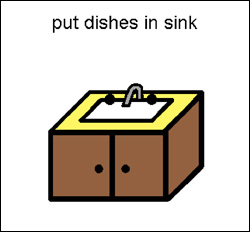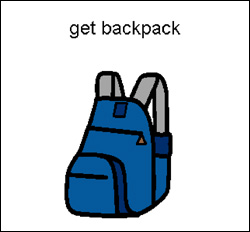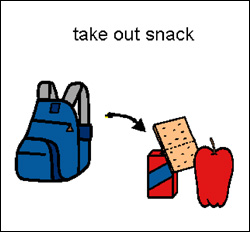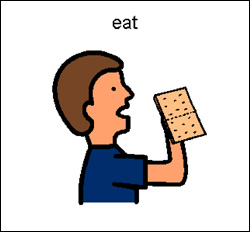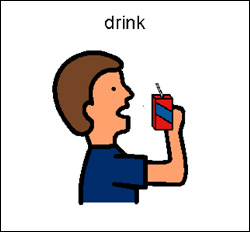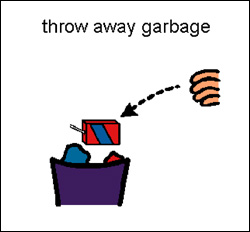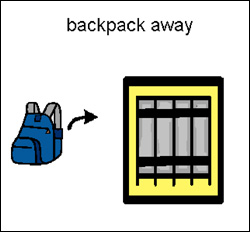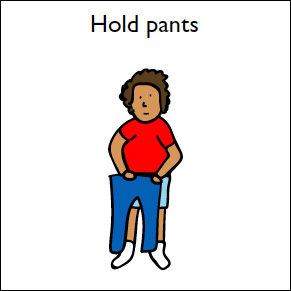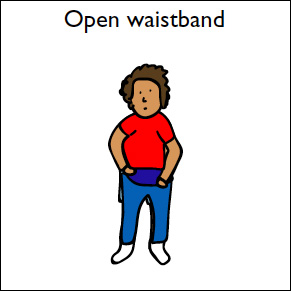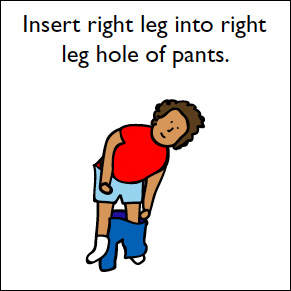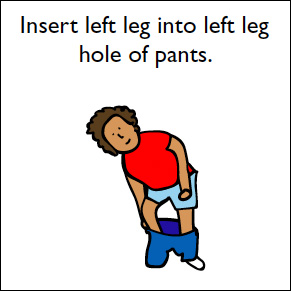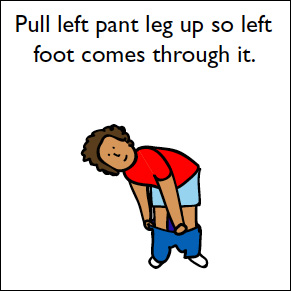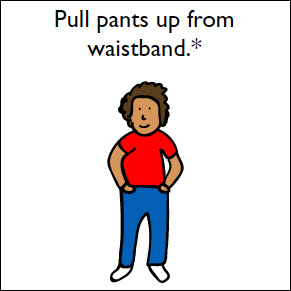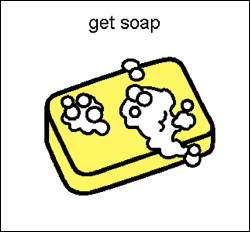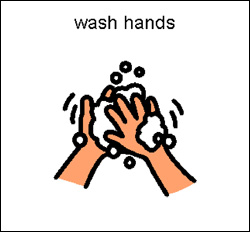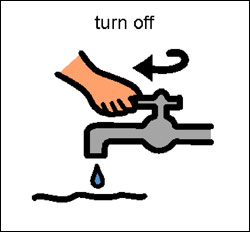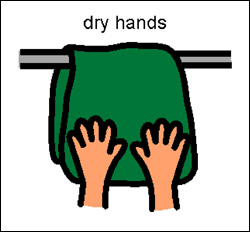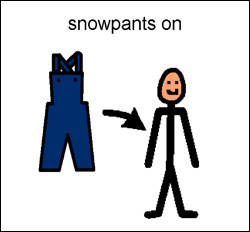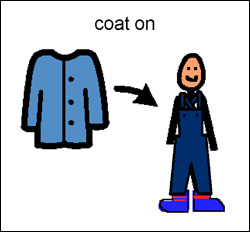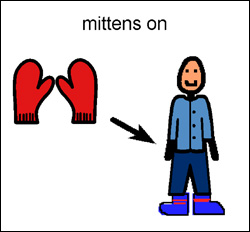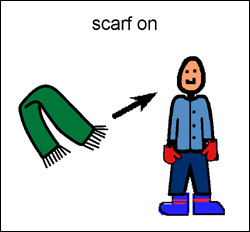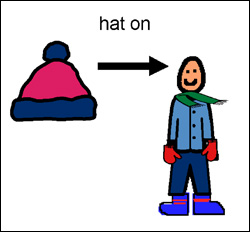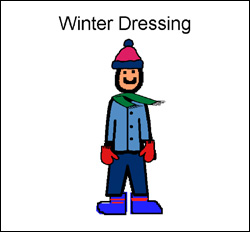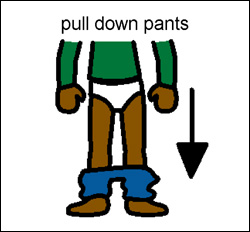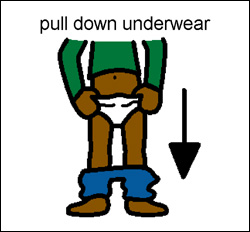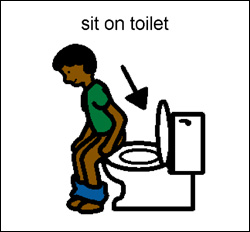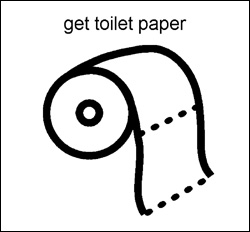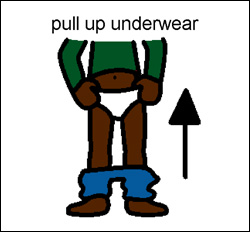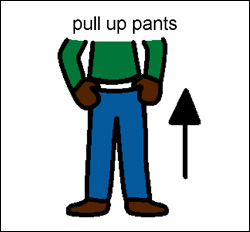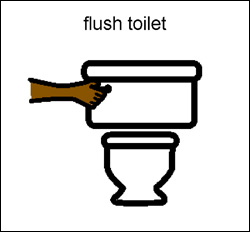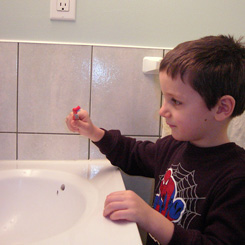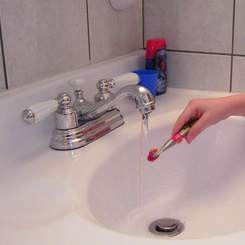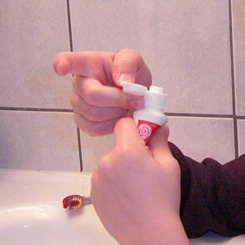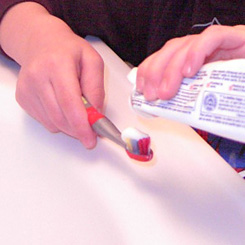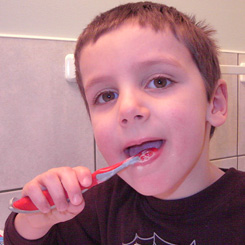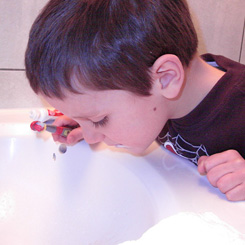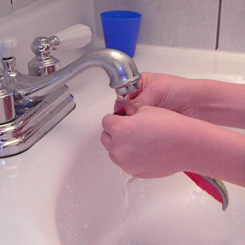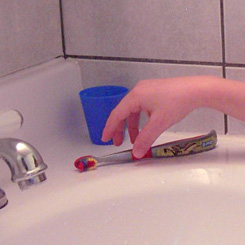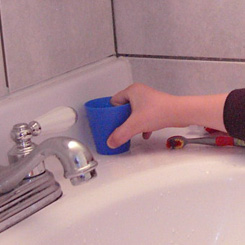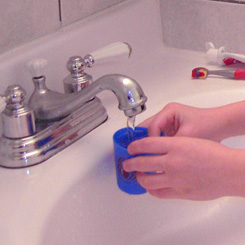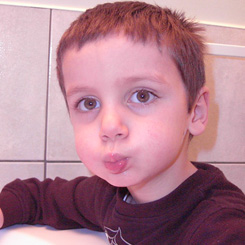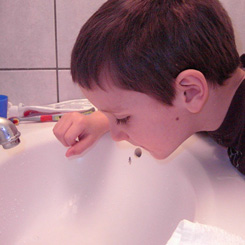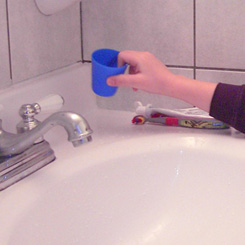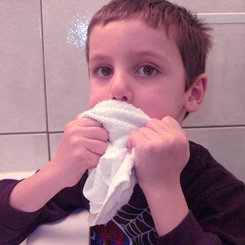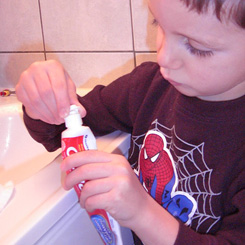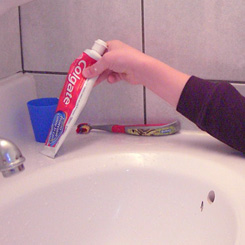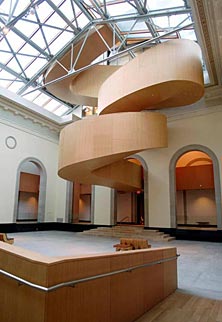The following listing is for community services and supports in the Toronto area, which welcome individuals with a developmental disability that are transitioning into older adulthood. This listing has been compiled for information purposes only. The programs have not been evaluated. Families/individuals are responsible for assessing each program to determine whether it meets their needs. Some of the programs have a fee for service.
Quickly navigate to a section:
Crisis Support
If you need help in an emergency or you are in crisis:
- Visit your local emergency department or call 911
- This is free from any pay phone
- You don’t need to speak English to call
- Translation is available in 140 languages
- Contact a general distress centre in Ontario near you (open 24 hours unless otherwise indicated)
- Toronto Distress Centres: (416) 408-4357 or 408-HELP
- Gerstein Centre: 416-604-2337 Languages – English, Mandarin, Cantonese
- Telecare: 416-920-0497
- Spectra Helpline: 905-459-7777 Languages – English, Punjabi, Hindi, Urdu, Spanish, Portuguese
- Assaulted Women’s Helpline: 416-863-0511, Toll-free is 1-866-863-0511
- Warm Line Progress Place: 416-960-9276 or 416-960-WARM, every day from 8pm to 12 midnight
- Distress Centre Peel: 905-278-7208
- Durham Crisis Line: 905-666-0483
- Oakville Distress Centre: 905-849-4541
Senior-Specific Crisis Support
Crisis Outreach Service for Seniors (COSS)
Type of Service: Crisis Intervention
Contact Information: 416-217-2077
Location: City of Toronto
Hours: 9am to 5pm, 365 days a year
About:
- On-call, free, mobile crisis intervention and outreach service for seniors who have suspected or diagnosed mental health concerns, including dementia, and/or addictions
- Provides short-term response
- Catchment: City of Toronto
- Provides mobile crisis intervention and counselling to older adults, short-term intensive case management, harm reduction and concurrent disorders service, limited primary care and nursing, mental health and addictions assessment, counselling and referrals
Fee: No
Toronto Seniors Helpline
Type of Service: Crisis Intervention
Contact Information: 416-217-2077
About:
- Specialized service for seniors in the Toronto Central LHIN area
- Provides assistance in stabilizing age-related mental health and addiction crises, risk and safety assessments, immediate referrals to community mobile crisis units, and support for families and caregivers
Fee: No
Community Programs
Family Service Toronto
Type of Service: Community
Phone:
Website: www.familyservicetoronto.org
Location: 202-128A Sterling Road, Toronto, M6R 2B7
About:
- The Seniors and Caregivers program at Family Service Toronto can help with the challenges of growing older or caring for an aging loved one
- Provides information and support needed to deal with issues such as overcoming isolation, caring for an aging parent, building closer ties with community, health concerns and more
- Provides counselling (in person, by telephone, or, in exceptional circumstances, arranging for a home/community visit) on topics such as dealing with chronic or degenerative illness, stress in family relationships, bereavement, the uprootedness and difficulty of adapting to a new culture at an advanced age, caregiver stress, elder abuse, and more
- Support groups and educational seminars available
Languages Available: English, Mandarin, and Spanish
Fee: No
Haven Toronto
Type of Service: Community
Phone: 416.366.5377
Website: http://www.haventoronto.ca/
Location: 170 Jarvis Street, Toronto ON
email: info@haventoronto.ca
About:
- A seniors club for men over 50 that provides essentials for men of limited means
- Provides services such as meals for $1.00, nursing care (free of charge and no OHIP card required), counselling and crisis support, educational and training workshops/programs, laundry and showers, mail, phone, and computer access, housing supports, emergency clothing and footwear, social and recreational activities, and daytime refuge
Fee: Depending on desired service, call for details
Senior’s Community Centre Programs
Community Centre Senior programs are revised each year. If you need an updated program guide, go to https://www.toronto.ca/ and in the search bar, search Toronto Fun Guide. Please note, that all of the programs listed on are for seniors specifically. Each community centre offers a wide range of recreation programs for the whole community.
If you need a caregiver to assist you with the community centre programs, call 311 and ask to register with “Adapted Programs and Integrated Services for People with Disabilities.”
If you need a discounted price because you are not over the age of 55, call 311 to start an account with “Welcome Policies”.
They will direct you to the proper office in your neighbourhood.
Scarborough District
Birkdale Community Centre
Address: 1299 Ellesmere Rd.
Phone: 416-396-4069
Cost: A $20 per year membership required. Classes are either free, or $25-$30 per class
Senior Classes: Dance, Card games, Fitness, Computer lounge, Crafts, Games, and much more. Programs are usually one day a week, for an hour for 12 weeks. A support person may be required. Will accept people under 65 for senior programs.
Burrows Hall Community Centre
Address: 1081 Progress Ave.
Phone: 416-396-4670
Contact: Lori Posner 416-396-5014 for further information
Fitness $37/10 weeks and Walking (1 hour free).
Programs are usually one day a week, for an hour (or more) for 12 weeks.
A support person may be required.
Centennial Recreational Centre
Address: 1967 Ellesmere Road
Phone: 416-396-4057
Cost: $48-$53 for 9-10 weeks (prices may change)
Open swim: Monday 9:30-10:50am, Tuesday 9:30am-10:30am, Wednesday 11:00am-12:00pm, Thursday 9:30am-10:30am, Friday 9:30am-10:30am.
Seniors shallow water work out: Wednesdays at 10:45am-11:45am and Thursdays at 10:45am-11:45am, and 3:00pm-4:00pm.
A support person may be required.
Don Montgomery Community Recreation Centre
Address: 2467 Eglinton Ave. East
Phone: 416-396-4043
Cost: Classes are either free, or $25-$40/class. A $20/year membership required.
Seniors Classes: Art studio, Fitness, Badminton, Baseball, Cards, Coffee club, Cooking, Crafts, Dance, Games, Walking, and much more!
Programs are usually one day a week, for an hour for 12 weeks.
A support person may be required.
L’Amoreaux Community Recreation Centre
Address: 2000 McNicoll Ave.
Phone: 416-396-4510
Cost: They are either free, or $25-$35/class (about 9-12 weeks). A $20/year membership required.
Seniors Programs: Dance, Badminton, Computer, Fitness, Games, Movies, and more. Programs are usually one day a week, for an hour (or more) for 12 weeks.
A support person may be required.
McGregor Park Recreation Centre
Address: 2231 Lawrence Ave. E.
Phone: 416-396-4023
Contact: Terry Chung (older adult programs) 416-396-7566
Seniors Programs: Cards (free), Dance (Free), Osteo Fitness ($69/11weeks),
Fitness passport, allows you to join any fitness class. Osteo Fitness, is usually 6 people, and the line dancing 20-30 people.
Oakridge Community Recreational Centre
Address: 63 Pharmacy Ave.
Phone: 416-338-1966
Cost: Classes are free if you are 60 years or over. A fee applies for those under 60.
Seniors Programs: Ballroom Dancing, Bingo, Cardio, Fitness, Painting, and more.
A support person may be required.
Port Union Community Centre
Address: 5450 Lawrence Ave. East
Phone: 416-396-4031
Cost: Some classes are free, others range from $25-50 for 10-12 weeks. A $20/year membership required.
Seniors Programs: Arts and crafts, Games, Fitness, Computers, Dance, and much more!
Will accept people under 60 for senior programs.
A support person may be required.
Scarborough Village Recreational Centre
Address: 3600 Kingston Rd.
Phone: 416-396-4048
Contact: Linda at 416-396-4086 for further information
Cost: Some classes are free, others range from $25-50 for 10-12 weeks. A $20/year membership required.
Seniors Programs: Art and crafts, Cards, Dance, Fitness, Games, and much more! Lots of free drop in programs. You can even come in just to watch the dancers.
A support person may be required.
Stephen Leacock Community Centre
Address: 2520 Birchmount Rd.
Phone: 416-396-4040
Cost: Some classes are free, others range from $25-50 for 10-12 weeks (prices may change). A $20/year membership required.
Seniors Programs: Art, Dance, Cards, Games, and much more!
A support person may be required.
East York District
Brown Community Centre
All programs are held at St. Johns Church.
Address: 454 Avenue Rd.
Phone: 416-392-6826
Cost: $28-$37 for a 9 week course
Seniors Programs: Bridge, Line dancing, and Pilates.
Participants can be under 60. Those under 60 might not get the half off discount, yet some exceptions are made.
A support person may be required.
East York Community Centre
Address: 1081 Pape Ave.
Phone: 416-396-2880
Seniors Programs: Low cardio fitness. $39/12 weeks
A support person may be required.
Riverdale Farm
Address: 201 Winchester St
Phone: 416-392-6794
Games Room (free)
Drop in and play games. Everyone is welcome, bring a support worker if required.
St. Lawrence C.R.C
Address: 230 The Esplanade
Phone: 416-392-1347
Bridge (free), Fitness/Cardio ($3.75 per visit) Social Club (free)
A support person may be required.
Etobicoke District
Amesbury Community Centre
Address: 1507 Lawrence Ave. W.
Phone: 416-395-0145
Seniors Programs: Chair Yoga, Gentle fitness ($28-$29/8-9 weeks)
A support person may be required.
Annette Community Recreation Centre
Address: 333 Annette St. Toronto Ontario
Phone: 416-392-0736
Seniors Programs: Osteo Fit ($42/13 weeks) Social Club (free)
Facilities include: Pool, Weight room
A support person may be required.
Centennial Recreation Centre West
Address: 2694 Eglinton Ave. West
Phone: 416-394-2475
Seniors Programs: Swimming
A support person may be required.
Domenico Diluca Community Centre
Address: 25 Stanley Rd.
Phone: 416-395-6673
Seniors Programs: Badminton (free), Friday Morning Fun (free), Tuesday and Thursday Gentle Fitness ($35/11 weeks), Walking Club (free).
A support person may be required.
Gord and Irene Risk Community Centre
Address: 2650 Finch Ave. West
Phone: 416-395-0355
Seniors Programs: Art studio ($33/9 weeks), Indoor Bocce (membership), and Gentle fitness ($37/10 weeks).
A support person may be required.
Islington Seniors’ Centre
Address: 4968 Dundas St. West
Phone: 416-231-3431
Seniors Programs: cards, bridge, table tennis, pool table. A foot clinic service.
A support person may be required.
Memorial Pool
Address: 44 Montgomery Rd.
Phone: 416-394-8731
Seniors Program: Aqua Fun. ($165/36 weeks)
A support person may be required.
Swansea Community Recreation Centre
Address: 15 Waller Ave.
Phone: 416-392-6796
Seniors Program: Gentle Fitness ($30/9 weeks)
A support person may be required.
York West Active Living Center
Address: 1901 Weston Rd.
Phone: 416-245-4395
Email: info@ywalc.ca
Website: http://www.ywalc.ca/
Are you 55+? Are you looking for action? Be a part of something big, be a part of York West Seniors! York West Senior Centre’s friendly staff and volunteers are always ready to welcome you to our bright, spacious centre. We strive to meet the needs of today’s seniors by continuously offering new programs and activities, from Osteoporosis fitness to Dancercise, Lunch & Learn to great day trips, we’ve got it all. Our affordable programs make it easy.
Must be 55+.
A support person may be required.
North York District
Barbara Frum Community Centre
Address: 20 Covington Rd.
Phone: 416-395-6123
Seniors Program: Gentle Fit ($44/12weeks)
Bernard Betel Centre
Address: 1003 Steeles Ave. West, Toronto, ON M2R 3T6
Phone: 416-225-2112
Email: reception@betelcentre.org
Website: www.betelcentre.org
The Bernard Betel Centre is a vibrant, non-profit community centre located in North Toronto with offerings for older adults (55+). We provide services and programs to over 5,000 individuals each year including fitness classes, recreation programs, educational programs, trips and travel, special events, holiday celebrations, community support services, language clubs, health and wellness, volunteer opportunities, and many more.
A support person/caregiver would need to come with the person if support was required.
Cummer Park Community Centre
Address: 6000 Leslie St.
Phone: 416-395-7803
Seniors Programs: Fun/Fit 50+ ($42.50/10 weeks)
A support person may be required.
Driftwood Community Centre
Address: 4401 Jane St.
Phone: 416-395-7944
Seniors Program: Gentle fit (free/10weeks) and social club afterwards. Usually a guest speaker comes in (For example: the police, diabetes association). Class size is about 20-25 people for one instructor.
A support person may be required.
Jenner Jean-Marie Community Centre
Address: 48 Thorncliffe Park Dr.
Phone: 416 396-2874
Seniors Programs: Arts and Crafts (free), Gentle Fit ($44/12 weeks), Social Club (free), Weight room (free)
A support person may be required.
Day Programs and Drop in Centres for Seniors
Etobicoke/York Region
ESS Support Service
Type of Service: Day program
Phone: 416-243-0127 for Intake
Location: 2245 Lawrence Ave W
Website: www.esssupportservices.ca
Email: mmolina@esssupportservices.ca
Hours: Mon-Sat 8:30 am-4:30 pm, extended hours are available
About:
- Adult Day services at five locations for seniors who are elderly, frail, socially isolated, and people with physical and/or cognitive impairments
- Serves Etobicoke and surrounding areas – there is no service area restriction if transportation service is not required
- Fee includes snacks and meals, extended hours cost more
- Round trip service for Etobicoke residents depending on availability of space
Fee: Yes
Humber Community Seniors’ Services Inc.
Type of Service: Day program
Phone: 416-249-7946
Location: 1167 Weston Rd
Website: www.humberseniors.org
email: info@humberseniors.org
Hours: Mon-Fri 10 am-3 pm
About:
- Adults with cognitive impairment and frail, vulnerable adults
- Serves Toronto
- Fee includes meal and snacks – subsidies are available based on income
- Round trip service available, call for details
Languages Available: English and Spanish
Fee: Yes
Kipling Acres
Type of Service: Day program
Phone: 416-392-2300, 416-392-2323 for Intake
Location: 2233 Kipling Ave
Website: www.toronto.ca/ltc/kiplingacres.htm
email: sgibson@toronto.ca
Hours: Mon-Fri 9 am-3pm
About:
- Community members who are physically frail, socially isolated or who have mild cognitive impairment
- Clients must be able to self-medicate and they cannot wander or require two-person transfers
- Fee includes meal and snacks – subsidies are available based on income
- Transportation is not available
Languages Available: English and Italian
Fee: Yes
Reconnect Community Health Services
Type of Service: Day program
Phone: 416-248-2050 ext 5214
Location: 2562 Eglinton Ave W Ste 202
Website: www.reconnect.on.ca/
email: info@servicesforseniors.ca
Hours: Mon-Fri 8 am-6 pm; Sat, Sun 9 am-5 pm; overnight service
About:
- Seniors who are physically frail, have physical challenges and/or have Alzheimer’s disease and/or dementia
- Serves Lawrence Ave W to St. Clair Ave W, Spadina Rd to the Humber River — no service area restriction if transportation service is not required
- Adult Day Program, Alzheimer Day Program and Interlude Program (overnight)
- Fees vary per program – subsidies are available based on income
- Round trip transportation available
Languages Available: English; staff speak Portuguese, Spanish and Italian
Fee: Yes
Storefront Humber
Type of Service: Day program
Phone: 416-259-4207
Location: 2445 Lakeshore Blvd W
Website: www.storefronthumber.ca
email: storefronthumber@bellnet.ca
Hours: Mon-Fri 9:30 am-2:30 pm, one Sat/month
About:
- Adult Day Programs at two locations for frail elderly, people with disabilities and people with early stage dementia
- Serves Sheppard Ave to southern boundaries of North York, Bayview Ave to Victoria Park Ave — no service area restriction if transportation service is not required
- Fee includes meal and snacks
- Round trip transportation for residents of the service area
Languages Available: English, Italian, Polish, Ukrainian; staff and volunteers may speak other languages
Fee: Yes
SYME 55 Centre
Address: 33 Pritchard Avenue Toronto, ON, M6N 1T4
Phone: 416-766-0388
Email: syme55@bellnet.ca
Website: www.syme55.com
Cost: $30/year activities at extra fee
Neighbourhood Served: Anywhere in Toronto
How to get started: Come in to get a free trial membership to see if it’s a right fit.
Eligibility: For active seniors, able to bring own personal support worker, wheelchair accessible.
Programs: Exercise, Tai Chi, Yoga, Pilates, Walking & Bird Watching Clubs, Dancercise, Bingo, Ballroom Dancing, and more.
North York Region
Baycrest
Type of Service: Day program
Phone: 416-785-2500 ext 2223
Address: 3560 Bathurst St
Website: www.baycrest.org
Hours: Mon-Thurs 9 am-3:30 pm Parkland and Oceanside, Mon-Fri 9 am-3:30 pm Mountain View
About:
- Three Adult Day Programs: Parkland for frail seniors; Oceanside for seniors with mild cognitive impairment; Mountain View for seniors with moderate to severe cognitive impairment
- Programs are non-sectarian but oriented towards Jewish culture
- Serves Centre Street to St. Clair Ave, Dufferin Ave to Leslie St — no service area restriction if transportation service is not required
- Fee includes snack and meal (Parkland and Oceanside); increased fee for Mountain View program
- Transportation available each way (Parkland and Oceanside); additional cost for Mountain View transportation
Fee: Yes
Better Living Health and Community Services
Type of Service: Day program
Phone: 416-447-7244 ext 541
Address: 1 Overland Dr
Website: www.betterlivinghealth.org
Email: info@betterlivinghealth.org
Hours: Mon- Fri 9 am-3 pm; Half days 9 am-12:30 pm or 12:30-3 pm
About:
- For persons with Parkinson’s, Alzheimer’s, dementia, cognitive impairment and physically frail
- Serves Sheppard Ave to Eglinton Ave, Yonge St to Victoria Park Ave — no service area restriction if transportation service is not required
- Fee includes meal and snacks; half-day available
- Round trip transportation available for residents of the service area
Fee: Yes
Circle of Care
Seniors with Alzheimers, Dementia or Cognitive Impairments
Address: 1600 Steeles St. West Unit: 18 (Dufferin Ave and Steeles Ave. )
Phone: 905-738-1128
Website: www.circleofcare.com
Cost: $36.00/day Subsidies are available.
Hours of Operation: Monday – Friday 9:30am4:30pm
Neighbourhood served: Transportation available (pick up and drop off) for $6 – 21 a day. *Only in the areas in between Wilson Avenue – Major Mackenzie, and Don Mills – Keele St.
How to get started: Must get a Doctor’s note to say that there has been a change in the individuals cognition. An actual diagnosis is not required.
Eligibility: Day Program for Seniors with Alzheimers, Dementia, or Cognitive Impairment. *Including seniors with a developmental disability with signs of a change in their cognition.
This is a Jewish environment, meaning that the food is kosher. Everyone is welcome!
There are 20 clients per day with a lot of staff including an onsite Nurse.
Cummer Lodge
Type of Service: Day program
Phone: 416-392-9502 for Intake
Address: 205 Cummer Ave
Website: https://www.toronto.ca/community-people/housing-shelter/long-term-care-homes/cummer-lodge/
Email: mailto:Jacalyn.Tuskin@toronto.ca
Hours: Mon-Fri 7:30 am-4 pm
About:
- Adult Day Program
- Persons living in the community, who are physically frail, socially isolated or who have mild cognitive impairment.
- Clients must be able to self medicate; they cannot wander or require two-person transfers
- Serves Toronto area
- Fee includes meal and snacks — subsidies are available based on income
Fee: Yes
Jane/Finch Community and Family Centre
Type of Service: Day program
Phone: 416-663-2733
Address: 4400 Jane St, Suite 108
Website: www.janefinchcentre.org
Email: admin@janefinchcentre.org
About:
- Unity in Diversity Adult Day Program
- Various days and times; all programs are four hours
- 10 groups are held at six different locations for mobile adults 55+
- TTC tokens are provided
Languages Available: Mixed English (three groups), Spanish (two groups); one group Vietnamese, Cambodian, Hindi, Guyanese and Punjabi
Fee: Call for details
Lumacare
Type of Service: B.O.O.S.T. Adult Day program
Phone: 416-398-5511, Call the Community Care Access Centre at Toll free 1-888-470-2222 to apply
Address: 15 Clubhouse Crt
Website: www.lumacare.ca
Email: info@lumacare.ca
Hours: Mon-Fri 9 am-3 pm
About:
- BOOST Day Program
- For individuals living with stroke, or other neurological disorders, or who are frail
- No service area restriction if transportation service is not required
- Fee includes lunch
- Round trip transportation available for residents of the service area (Steeles Ave W to Lawrence Ave W, Humber River to Bathurst St.)
Languages Available: English and Italian
Fee: Yes
Mary Centre Integrated Seniors
Address: Mary Centre (Bathurst & Finch) – Program offered in the community Greater Toronto Area, ON
Phone: 416-630-5533 ext.222
Contact: Tracey Berman
Email: traceyb@marycentre.com
Website: www.marycentre.com
Hours: 1 to 2 times per week
Cost: free
Helps people age 50 years and older, participate in leisure, educational, recreational and or volunteer opportunities that encourage integration with others. Each person is supported on an individual basis to match their unique interests with appropriate activities.
North York Seniors Centre
Type of Service: Day program
Phone: 416-733-4111
Address: 80 Sheppard Ave W
Website: www.nyseniors.org
Email: email@nyseniors.org
Hours: Mon-Fri 10am – 3pm
About:
- A Day Away Club
- Depending on availability, clients can attend two or three days per week
- Seniors who are physically frail and/or cognitively impaired and individuals with Parkinson’s disease
- Service area is Steeles Ave to Hwy 401, Bathurst St to Victoria Park Ave — no service area restriction if transportation service is not required
- Fee includes meal and snacks
- Single and round trip transportation available for residents of service area
Fee: Yes
Villa Colombo Services for Seniors
Type of Service: Day program
Phone: 416-789-2133
Address: 40 Playfair Avenue
Website: www.villacharities.com
Email: ricci@villacolombo.on.ca
Hours: Mon-Fri 8 am-4 pm
About:
- Adult Day Program
- Program is geared toward Italian-Canadians, 50+, with cognitive impairment due to Alzheimer’s disease, related dementias or brain injuries
- Contact a Community Care Access Centre to apply
- Fee includes meal and snacks — subsidies are available based on income
- Price varies for round trip transportation within the service area Steeles Ave to St. Clair Ave, Islington Ave to Yonge
Languages Available: English and Italian
Fee: Yes
Scarborough Region
Bendale Acres
Type of Service: Day program
Phone: 416-397-7020 Intake
Address: 2920 Lawrence Ave E
Website: www.toronto.ca/ltc/bendaleacres.htm
Email: Susan.Kwiatkowski@toronto.ca
Hours: Mon-Fri 7:30 am-5 pm
About:
- Adult Day Program – Link
- Community members who are physically frail, socially isolated or who have mild cognitive impairment.
- Clients must be able to self medicate and they cannot wander or require two-person transfers.
- Fee includes meal and snacks — subsidies are available based on income
- No transportation available
Fee: Yes
Carefirst Seniors and Community Services Association
Type of Service: Day program
Phone: 416-502-2323
Address: 3601 Victoria Park Ave Ste 209/300 Silver Star Blvd. 2/F
Website: www.carefirstseniors.com
Email: info@carefirstseniors.com
Hours: Mon-Fri 9:30 am-3:00 pm
About:
Adult Day Program
- For adults 55+ who experience functional limitations or social isolation
- Fee includes meal and snacks
- Round trip transportation available for residents of the service area
SERVICE LOCATIONS & LANGUAGES
- Scarborough: 300 Silver Star Blvd., 2/F (Languages: English, Spanish, Tagalog)
- Scarborough: 3601 Victoria Park Ave., Suite 209 (Languages: English, Cantonese, Mandarin)
- Richmond Hill: 9893 Leslie Street (Languages: English, Cantonese, Mandarin)
FOR MORE INFORMATION ON ENROLLMENT, PLEASE CALL:
- (416) 847-0277 (Scarborough – Silver Star Location)
- (416) 649-1212 (Scarborough – Victoria Park Location)
- (905) 780-9646 (Richmond Hill Location)
Languages Available: English, Mandarin, Spanish, Tagalog, and Cantonese
Fee: Yes
Providence Community Centre
Type of Service: Day program
Phone: 416-285-3803
Address: 3276 St. Clair Ave E
Website: providence.on.ca
Hours: Mon-Fri 24 hours, Sat 7 am-5 pm
About:
- For individuals with Alzheimer’s disease and/ or dementia; must have a diagnosis of irreversible dementia
- Evening club and overnight stay care available
- Serves Greater Toronto Area
- Fee includes meal and snacks
- Assistance with arranging transportation is available
Fee: Yes
Scarborough Centre for Healthy Communities
Type of Service: Day program
Phone: 416-847-4134
Address: 629 Markham Rd Unit 2
Website: www.schcontario.ca
Email: cssintake@schcontario.ca
Hours: Mon-Fri 9:30 am-4:00 pm
About:
- Persons in early stage of Alzheimer’s disease or other dementia, persons with disabilities, vulnerable and at-risk seniors
- Serves Hwy 401 to Lake Ontario, Markham Rd to Scarborough eastern limits — no service area restriction if transportation service is not required
- Fee includes meal and snacks
- Transportation available for residents of the service area
Languages Available: English and Greek
Fee: Yes
Senior Persons Living Connected
Type of Service: Day program
Phone: 416-493-3333 ext 299
Address: 3333 Finch Ave E
Website: www.splc.ca
Email: info@splc.ca
Hours: Dependant on program
About:
- Living Well Day Program and Chinese Day Program, Mon-Fri 9 am-3 pm
- Greek Day Program, Mon-Thurs 9 am-3 pm
- Sunflower Club (Dementia and Alzheimer Program)
- 55+, cognitively impaired or not, physically well or frail
- Serves Denison Rd to Ellesmere Rd, Don Mills Rd to Brimley Rd — no service area restriction if transportation service is not required
- Fees vary based on full and half-day program and inclusion of lunch
- Transportation available for area residents depending on location, costs vary
Languages Available: English, Greek, Mandarin and Cantonese
Fee: Yes
TransCare Community Support Services
Type of Service: Day program
Phone: 416-750-9885 ext 278, Toll free 1-866-393-2079
Address: 1045 McNicoll Ave
Website: www.tcare.ca
Email: info@tcare.ca
Hours: Mon-Fri 10 am-3 pm
About:
- Seniors, adults with disabilities and/or those who are chronically ill and individuals in early stages of dementia
- Serves Steeles Ave to Lake Ontario, Victoria Park Ave to Port Union Rd — no service area restriction if transportation service is not required
- Full and half-day program fees includes meal and snacks
- Round trip transportation available for residents of the service area
Fee: Yes
Warden Woods Community Centre
Type of Service: Day program
Phone: 416-694-1138 ext 133
Address: 74 Firvalley Crt
Website: www.wardenwoods.com
Email: samanthab@wardenwoods.com
Hours: Mon, Tues, Thurs 9 am-3 pm
About:
- For frail 55+ and persons in the early stages of Alzheimer’s disease and other dementias
- Serves Eglinton Ave E to Lake Ontario, Victoria Park Ave to Kennedy Rd — no service area restriction if transportation service is not required
- Fee includes meal, snacks, program supplies and transportation — subsidies are available based on income
- Transportation is available for residents of the service area who do not have Wheeltrans access
Fee: Yes
Toronto & East York Region
Alzheimer Program – St. Clair O’Connor Community
Address: 2701 St Clair Avenue East Toronto, ON, M4B 3M3
Phone: 416-757-8757
Contact: Melody Humphrey, Program Supervisor
Cost: $15 per day. Lunch provided.
Hours of Operation: Monday – Friday 9am4pm
Neighbourhood Served: East York
How to get started: Call Melody Humphrey to start an assessment and see if the program is right for you.
Eligibility: Alzheimer patients
Small day program for seniors with Alzheimers. Different activities through out the day. Activities such as: exercise, arts and crafts, board games, music and small outings.
Call A Service Inc.
Harmony Hall Centre for Seniors
Address: 2 Gower Street, Toronto, Ontario M4B 1E2
Phone: 416-752-0101
Website: http://www.call-a-service.com/
Cost: Yearly fee of $15. Special Events are $3 – $7 extra.
Hours of Operation: 8:00am5:00pm
Eligibility: Must be 55 or older to join.
This is a drop in centre for seniors. Programs offered are: chess, snooker, table tennis, fitness, crafts, luncheons and more. Able to come by themselves, or bring a support worker. Has had individuals with a developmental disability join.
Community Care East York
Multi-service Organization
Address: 840 Coxwell Avenue Suite 101
Phone: 416-422-2026
Contact: Ask for the Intake department. They will carry out an assessment and determine which programs and services are a right fit.
Cost: $8.00 a day. More for transportation $20+ depending on the distance. A subsidy is available upon financial assessment.
Hours of Operation: 10:00am to 3:00pm
Neighbourhood Served: Bayview to Victoria Park, Danforth Ave.Eglinton Ave.(some exceptions)
Programs: Adult Day Program Chinese and Seniors Day Program
Program Highlights:
- Transportation will be provided to and from, when needed.
- Clients will be provided with hot lunches and snacks.
- Recreational activities reflect client interests.
- Space is bright, level, wheelchair accessible and secure.
- Friendly, caring staff offer one-on-one assistance, if needed.
- Programs are client centred, with no more than eight participants.
- Escorted transportation is available for clients who require assistance door to door.
Corpernicus Lodge
Type of Service: Day program
Phone: 416-536-7122 ext 225
Address: 66 Roncesvalles Ave
Website: www.copernicuslodge.com
Email: zorkad@copernicuslodge.com
Hours: Mon, Wed, Thurs, Fri 8:30 am-3:30 pm
About:
- For frail or cognitively impaired seniors 60+ and Polish speaking
- Fee includes meal and snacks; half-day program available
Languages Available: English and Polish
Fee: Yes
Dixon Hall
Address: 188 Carlton St. Toronto
Phone: 416-863-0499 ext 3222
Website: http://dixonhall.org/seniors/#adult-day-programs
Cost: $21/day
Adult Day programs offer opportunities for seniors and adults with disabilities to connect, make new friends and take part in fun, interesting and therapeutic activities. Programming caters to individuals of varying capabilities including those who are frail, dealing with cognitive impairment, physical disabilities and illness.
Hellenic Home
Type of Service: Day program
Phone: 416-654-7700 ext 2275
Address: 33 Winona Dr
Website: www.hellenichome.org
Email: amantziounis@hellenichome.org
Hours: Mon, Wed, Fri 9 am-4 pm
About:
- 65+; may be frail and/or cognitively impaired
- Fee includes meal and snacks — subsidies are available based on income
Languages Available: English and Greek
Fee: Yes
Les Centres D’Accueil Héritage
Type of Service: Day program
Photo: 416-365-3350
Address: 33 Hahn Pl Ste 104
Website: www.caheritage.org
Email: gmanena@caheritage.org
Hours: Mon-Thurs 9:30 am-2:30 pm
About:
- French speaking vulnerable adults; frail adults, individuals with dementia, individuals with physical disabilities
- There may be a waiting list
- Fee includes transportation, snack, lunch and activities — subsidies are available based on need
- Adult Day Program held at two locations in Toronto, call for details
Languages Available: French
Fee: Yes
Neighbourhood Link Community Services
Type of Service: Day program
Phone: 416-691-7407
Address: 3036 Danforth Avenue, Toronto
Website: www.neighbourhoodlink.org
Email: info@neighbourhoodlink.org
Hours: Mon-Sat 9:30 am-3:30 pm; Wed, Thurs 5-8 pm (for frail and isolated seniors)
About:
- For frail and isolated elderly and individuals with dementia (Wednesday and Friday); also for the cognitively impaired and for people with Alzheimer’s disease
- Serves Danforth Ave to Lake Ontario, Coxwell Ave to Victoria Park Ave — no service area restriction if transportation service is not required
- Fees vary and include meal and transportation — subsidies are available based on need
- Transportation available for seniors living near Neighbourhood Link offices and facilities
Fee: Yes
SEAS Centre
SouthEast Asian Seniors
Address: 50 Regent Park Blvd., Street Level Unit 101, Toronto
Phone: 416-466-8842
Website: http://www.seascentre.org/
Cost: Free
How to get started: Drop in and register.
Activities, games, outings etc.
Second Mile Club of Toronto
Address: 192 Carlton St. Toronto Ontario M5A 2K8
Phone: 416-597-1812
Contact: Ask for the intake department. An assessment can be arranged.
Website: www.secondmileclub.ca
Cost: Membership $40.00/ year
Hours of Operation: 9:00am3:00pm Monday to Friday
Neighbourhood Served: Bathurst StDVP, St.Clair Ave.Lakeshore
Eligibility: All seniors welcome including seniors with Alzheimers, or Dementia. After the assessment, they will let you know if you need to bring a personal support worker with you or not.
Lunch: $5.50/day (otherwise bring your own lunch)
Transportation: $5.00/day
Set in a cozy Victorian home in the heart of Cabbagetown. This facility based support program is designed for the frail older adult, who requires specialized programs, small group activities, nutritious meals and transportation. The program provides caregiver respite & support.
Activities include: Card games, Lacrosse Group, Everyday fitness, Fitness for Arthritis, Garden Club, Special occasion parties (Holidays) BBQ and more. This Organization also has community support services and friendly visiting. (See homecare)
Senior Adult Services in the Annex
Type of Service: Day program
Phone: 416-923-8909
Address: 707 St Clair Ave W, Toronto
email: sasannex@rogers.com
Hours: Fri 9 am-3 pm, Mixed program
About:
- 65+; may be frail
- Call to apply
- Fee includes lunch
- Transportation not available
Fee: Yes
SPRINT – Senior Peoples’ Resources in North Toronto
Type of Service: Day program
Phone: 416-481-6411
Address: 140 Merton St 2nd Fl
Website: www.sprint-homecare.ca
Email: info@sprintseniorcare.org
Hours: Mon-Sat 9:30 am-3 pm; Tues, Wed, Fri 2:30 pm-7:30 pm
About:
- 55+ living in the community; also for persons who are physically frail or who have cognitive or physical impairment
- Day Program held at the Anne Johnston Health Station at 2398 Yonge St 2nd Fl
- Serves Hwy 401 to Bloor St, Bathurst St to Bayview Ave
- Fee includes meal and snacks — subsidies are available based on income
- Transportation available for residents of the service area who have no other means of getting to and from the program; fees apply
Fee: Yes
St. Clair O’Connor Community Inc.
Type of Service: Day program
Phone: 416-757-8757
Address: 2701 St. Clair Ave E
Website: www.scoc.ca
Email: info@scoc.ca
Hours: Mon-Fri 9 am-3:30 pm
About:
- For frail seniors, persons in early/moderate stage of dementia and stroke recovery patients
- Fees for full and half-day program includes meal and snacks — subsidies available based on income
- Uses Harmony Hall ride service for East Toronto clients 416-752-8868
Fee: Yes
St. Stephen’s Community House
Type of Service: Day program
Phone: 416-925-2103 ext3110
Address: 340 College St
Website:
Email: tirene@sschto.ca
Hours: Tues, Thurs (mixed), Fri (Chinese) 9 am-2:30 pm
About:
- Multicultural Integrated Adult Day Service
- For frail or isolated 55+; also for persons with cognitive impairments and early stage Alzheimer’s disease
- Serves Davenport Rd to Queen St W, Dufferin St to University Ave. — no service area restriction if transportation service is not required
- Fees vary depending on client’s income — subsidies are available based on income
- Transportation available for residents of the service area; cost is included in daily fees
Languages Spoken: English, Cantonese, Mandarin and Portuguese
Fee: Yes
West Neighbourhood House (formerly St. Christopher House)
Type of Service: Day program
Phone: 416-532-4828 ext 146
Address: 248 Ossington Ave
Website: www.westnh.org
Email: info@westnh.org
Hours: Mon-Fri 8 am-6 pm, Sat 9 am-5 pm
About:
- Adult Day Program and Enhanced Adult Day Program
- 55+; Enhanced Adult Day Program for frail seniors and those 55+ with a cognitive impairment and/or physical disability
- Serves Bloor St to Lake Ontario, Roncesvalles Ave to Yonge St. — no service area restriction if transportation service is not required
- Fee includes meal, snacks and transportation — subsidies are available based on income
- Round trip transportation available for residents of the service area
Languages Available: English, Portuguese, Italian, Cantonese and Mandarin
Fee: Yes
West Toronto Support Services
Type of Service: Day program
Phone: 416-653-3535
Address: 1709 Bloor St. West. 2nd Floor
Website: https://wtss.org/services/adult-day-services/
Email: info@wtss.org
Hours: Mon-Fri 9 am-4:30 pm
About:
- For cognitively impaired or frail 55+ and adults with disabilities
- Serves St. Clair Ave W to Bloor St W, Humber River to Bathurst St; boundaries may vary for some programs — no service area restriction if transportation service is not required
- Fee includes meal and snacks
- Round trip transportation available for residents of the service area
Languages Available: English; staff speak other languages
Fee: Yes
WoodGreen Community Services
Type of Service: Day program
Phone: 416-572-3575
Address: 815 Danforth Ave Ste 100
Website: www.woodgreen.org
Email: cccentralintake@woodgreen.org
Hours: Mon-Fri 9 am-2:30 pm
About:
- Two Adult Day Programs at different locations for frail seniors and people with dementia
- Eglinton Ave E to Danforth Ave, Bayview Ave to Victoria Park Ave; Danforth Ave to Lakeshore Blvd E, Don Valley Pkwy to Coxwell Ave. — no service area restriction if transportation service is not required
- Fee includes meal, snacks and transportation for residents of service area — subsidies are available based on income
Languages Available: English, Cantonese and Mandarin
Fee: Yes
Seniors Home Care Services
It is a good Idea to start with the Health Integration Networks (LHINs) http://www.lhins.on.ca/
Bayshore Healthcare
Address: 345 Bloor Street E (Greenwin Square), Unit 1B
Phone: (416) 927-7850
Website: www.bayshore.ca
e-mail: clientservices@bayshore.ca
Toronto Neighbourhoods Served: Entire GTA
Services Available: PSW (personal support), home support, DSW (developmental service workers), RSW (rehab support), Nursing, Occupational Therapy, Physiotherapy, Speech-Language Pathology, Funding Investigations
Cost: $23/hour for PSW, up to $65/hour for Nursing. Everything is 1 hour minimum. Free funding investigation.
How To get started: call for a free in-home assessment
Canes Community Care
Phone: 416-743-3892
Contact: Contact to book a free home assessment to develop a plan.
Website: www.canes.on.ca
Neighbourhood Served: Etobicoke, Brampton, Orangeville, and Malton
Services:
Personal Care: (Trained) Personal Support Worker assists with daily living care. (Bathing, hygiene, meal time assistance)
Homemaking: (Light housekeeping) vacuuming, dusting, meal preparation, clean up, general cleaning. Grocery Shopping.
Respite Care: Personal Support Worker comes into the home to relieve caregiver.
Seniors Luncheon: various Locations in Northern Etobicoke (extension 240)
Caregiver Support: Service to caregiver. Individual support and group sessions.
Friendly Visiting: a volunteer is matched with a senior for regular social visits in client’s home. (FREE) (416-743-3892 ext.234)
Home at Last: Assistance with returning home from the hospital.
Carefirst Seniors and Community Services Association
Address: 300 Silver Star Blvd.,Scarborough, Ontario M1V 0G2
Phone: 416-502-2323
Website: www.carefirstseniors.com
Cantonese/Chinese speakers
Private Care Service: Light housekeeping. $16.50/hr
Personal Support: $21.00/hr
Central Neighbourhood House
Address: 349 Ontario Street
Phone: 416-649-1000
Contact: Sabah Hassan, Manager, Supportive Housing, ph:416-649-1000 ext 1213, shassan@cnh.on.ca
Kathy Jay, Client Care Manager, ph:416-649-1000 ext 1163, kjay@cnh.on.ca
Website: www.cnh.on.ca
In home services and respite.
Cost: Cost depends on the individual’s financial situation. Could be $10-25/hr
Neighbourhood Served: Area served in between Bloor, Lakeshore, Yonge and DVP. If referred by C.C.A.C then serves the areas in between Ossington -Victoria Park and South of Bloor including the Toronto Islands.
How to get started: Apply by calling, through C.C.A.C, or through the City of Toronto.
Home Services: Laundry, cleaning, help with shopping, Personal Support Workers.
Respite: In-home caregiver relief.
Circle of Care
Address: 4211 Yonge St Ste 401, Toronto, ON M2P 2A9
Phone: 416-635-2860
Website: www.circleofcare.com
How to get started: Call and ask to speak with the intake department. From there you will go through an assessment to see if the organization is the right fit.
Transportation, personal care, homemaking, home support, constant care companion, nursing services
Dixon Hall
Address: 58 Sumach Street. Toronto, ON M5A 3J7
Phone: 416-863-0499
Website: www.dixonhall.org
Email: info@dixonhall.org
Cost: $9.00/hr. Minimum 2 hours per visit.
Neighbourhood Served: River St. – Church, Carlton – Lakeshore
How to get started: Call Dixon Hall and request services, or apply through C.C.A.C
Eligibility: 55+ or unless referred by the C.C.A.C.
Light housekeeping, in home or group home. Dusting, moping, light meal preparation, small errands, bed making if requested.
Home and Community Care (Central Local Health Integration Network)
Phone: 416-222-2241
Website: http://healthcareathome.ca/central/en
How to apply: call the number and they will arrange an assessment in order to determine specific needs.
- Arrange in home health and social services
- Placement in Long Term Care homes
- Respite Services
They have contracts with other agencies.
Prices from the Ministry of Long Term Care
Private room: $2,599.11/month / Semi-Private Room (2 people): $2,193.65/month / Basic Room (around 4 people): $1,819.53/month.
Humber Community Seniors Service
Address: 1167 Weston Road Toronto, ON
Phone: 416-249-7946
Website: www.humberseniors.org
Cost: $36/3 hr. 3 hour minimum
Neighbourhood Served: The Humber River- Bathurst St. and Lawrence Ave- Bloor St.
Home Help: Light housekeeping, light food prep, light grocery help.
Transportation Service: Transportation to social, medical, help with groceries.
Fee for service
Lumacare Services
Address: (Main Office) 497 Wilson Ave. North York, Ontario M3H 1V1
Phone: 416-398-5510
Contact: Ask for Intake department.
Website: https://lumacare.ca/
Neighbourhood Served: Areas between Bathurst St – Humber, Steeles Ave. – St.Clair Ave
How to get started: Downsview Services for Seniors will conduct an assessment to make sure client gets appropriate care.
Personal Care: Dressing, feeding, meal preparation, and light housekeeping.
Home support: Light house keeping and help with grocery shopping.
Meals on Wheels
For a complete list of Meals on Wheels programs in Toronto go to www.211toronto.ca and search using ‘meals on wheels’
North York Seniors Centre
Address: 80 Sheppard Ave. West, North York, ON M2N 1M2
Phone: 416-733-4111
Website: www.nyseniors.org
Cost: $17.80/hr minimum 1.5 hours. Subsidies available
Neighbourhood Served: Area between: Bathurst-Victoria Park, Steeles – 401.
Eligibility: 55+ (or with a disability)
Home Care and Respite: Light housekeeping , medication monitoring, personal care, transportation, grocery shopping, and more.
(NHI) Nursing and Homemakers Inc.
Address: 2347 Kennedy Road Suite 204 Scarborough ON M1T 3T8
Phone: 416-754-0700
Website: www.nhihealthcare.com
Cost: Depending on the needs can range from $20 or $25/hr
How to get started: Call to have an over the phone assessment, and then set up a physical in-home assessment.
A private nursing, respite and homecare service.
Reconnect Community Health Services
Address: 2562 Eglinton Ave. West Ste 202
Phone: 416-248-2050 ext. 5214
Website: www.reconnect.on.ca
Cost: $12/hour minimum 2 hours every 2 weeks.
Neighbourhood Served: Map (see service area 2) Approx. *South of Lawrence, East of Dufferin, West of Bathurst North of St.Clair West.
*West of Dufferin, North of St.Clair, East of Keele, South of Rogers Road.
How to get started: Call the intake department to set up an assessment.
Eligibility: Need to sign up to the waiting list.
Services Include: Light housekeeping, laundry, meal preparation, assistance with banking, shopping, errands, companionship, personal care including assistance with personal hygiene, light exercise, and medication reminders.
Scarborough Centre for Healthy Communities
Home Help and Homemaking
Address: 629 Markham Rd Unit 2, Toronto, ON M1H 2A4
Phone: 416-847-4122
Website: www.schcontario.ca
Cost: Cost depends on a case by case basis
Neighbourhood Served: (In Scarborough) Brimley- Steeles Ave.
How to get started: Call and request to speak with home help and home making
Eligibility: Seniors that need light housekeeping, vacuuming, dusting, moping, changing bed sheets, laundry and bathroom cleaning.
In Home Respite
Cost: Cost is determined by a case by case scenario
Neighbourhood Served: Brimley – Steeles Ave.
How to get started: Call and request to speak with respite services. A home assessment will take place.
Eligibility: Seniors that need light Respite. no overnight services.
Scarborough Centre for Healthy Communities
Transportation to medical appointments
Phone: 416-847-4134
Cost: $10 round trip.
- advance booking. limited wheelchair van, so book far in advance if possible.
- Not for emergencies
- Bring a Personal Support Worker with them if required
Neighbourhood Served: Scarborough
S.P.R.I.N.T Senior Peoples’ Resources in North Toronto
Address:(head office) 140 Merton Street, 2nd. Floor, Toronto, ON M4S 1A1
Phone: 416-481-6411
Email: info@sprintseniorcare.org
Website: https://sprintseniorcare.org/
Cost: Depends on service. Subsidies are offered.
Neighbourhood Served: All of North Toronto
How to get started: Call and ask about home care services, respite, transportation, or friendly visiting.
Eligibility: for all seniors
A very large agency with a variety of services available which helps seniors live at home independently.
Storefront Humber
Address: 2445 Lakeshore Blvd. West, South Etobicoke
Phone: 416-259-4207
E-Mail: sfh@storefronthumber.ca
Website: http://www.storefronthumber.ca/
Contact: Call intake worker, to set up an assessment to determine individuals needs.
Cost: Is based on sliding scale.
Home Services and Respite: Light housekeeping, personal care, etc.
5 different dinning locations throughout south Etobicoke. ($2 a day)
Spectrum Health Care
Address: 2 Bloor St.
Phone: 647-952-0322
Website: www.spectrumhealthcare.com
Cost:Contact for fee schedule
Neighbourhood Served: All of Toronto (South of Steeles Ave.)
How to get started: Call and inquire, or apply through the C.C.A.C.
Respite Care, Post Surgery, Rehabilitation, Wound Care
TransCare Community Support Services
Address: 1045 McNicoll Avenue,Toronto, ON M1W 3W6
Phone: 416-750-9885
Email: info@tcare.ca
Contact: ask for home care department
Website: www.tcare.ca
Cost:
- Personal Care Service $17/hr min. 1 hour
- Home care Services $14/hr min 2 hours.
Neighbourhood Served: Scarborough
How to get started: Call and inquire about home care and personal support services
Eligibility: Seniors, Seniors with Alzheimer’s, Dementia, and other disabilities.
Personal care: Showers, hygiene, light house cleaning and light meal prep
Home care: must provide own cleaning supplies. *no bleach.
VHA Home HealthCare
Address: (Head Office) 30 Soudan Ave., Suite 500 Toronto, ON M4S 1V6
Phone: 416-489-2500
Website: www.vha.ca
Cost: $24.50/HR
Neighbourhood Served: all of GTA
In home nursing (registered nurses), homemaking, personal support. Respite services as well.
Vidal Home Care
Address: 18 King St E Unit 1400 Toronto, ON M5C 1C4
Phone: 416-734-4967
Contact: info@vidalhomecare.com
Website: www.vidalhomecare.com
Cost: $22/hr
Neighbourhood Served: Toronto and surrounding cities; Mississauga, Burlington, Oakville, Richmond Hill, Markham, North York
Eligibility: Private pay
Services Include: Home care services, personal care, grooming, light housekeeping, meal preparation, transportation, respite.
WE CARE Home Health Services
Address:(Head Office) 3300 Bloor St. West, West Tower, Suite 900, Toronto
Phone: 1.866.729.3227
Website: www.cbi.ca/web/we-care-home-health-services
Cost: $22.50/hour minimum 3 hours per visit.
*Free home care assessment
*Homemaking and personal support services. Nursing care.
West Toronto Support Services
Address: 1709 Bloor St West 2nd Fl, Toronto, ON M6P 4E5
Phone: 416-653-3535
Contact: Intake for housekeeping and meals on wheels.
Website: wtss.org
Cost: Service fee
Neighbourhood Served: St Clair Ave W (north) to Bloor St W (south), Humber River (west) to Bathurst St (east) * also Bloor St W (north) to Lake Shore Blvd W (south), Humber River (west) to Roncesvalles Ave (east) * boundaries may vary for some programs
How to get started: Call to inquire about the home support services.
Yorkminster Park Meals on Wheels
Address: Yorkminster Park Baptist Church, 1585 Yonge Street, Toronto, ON M4T 1Z9
Phone: 416-482-0549
Email: info@ypmealsonwheels.com
Website: ypmealsonwheels.com
Cost: Hot meals $4.95, Week supply of frozen food $28
Neighbourhood Served: MountPleasent- Bathurst St.Clair Ave.-Lawrence Ave.
Long Term Care Facilities for Seniors
It is a good Idea to start with the Health Integration Networks (LHINs) http://www.lhins.on.ca/
Home and Community Care – Central Local Health Integration Network
Phone: 416-222-2241
Website: healthcareathome.ca/central/en
How to apply: Your first step is to call our main phone number 310-2222.
- Arrange in home health and social services.
- Placement in Long Term Care homes
- Respite Service.
They have contracts with other agencies.
Prices determined by the Ministry of Long Term Care
Long term Care directory: Long Term Care Directory
Volunteering
Toronto Seniors’ Forum
Type of Service: Volunteer (Social & Political)
Email: neighbourhoods@toronto.ca
Website: https://www.toronto.ca/community-people/get-involved/community/toronto-seniors-forum/
Address: 100 Queen St. W., Toronto, ON, 15th Floor, East Tower, City Hall
About:
- The Toronto Seniors’ Forum is a volunteer group that engages seniors in Toronto in the workings of local government
- The Toronto Seniors’ Forum gives a voice to seniors not often heard
- Dedicated members work to ensure the City of Toronto meets its commitment to provide services equitably to all senior residents
- The Seniors’ Forum meets once a month
Accessible Parking and Public Transit
Ontario Ministry of Transportation
Type of Service: Transportation (Provincial)
Phone: Service Ontario 416-235-2999, Toll Free 1-800-387-3445
Website: www.ontario.ca/page/get-accessible-parking-permit
About:
- Individuals who have difficulty walking can apply for an Accessible Parking Permit from the Ontario Ministry of Transportation
- Eligibility for an accessible permit needs to be certified by a recognized health practitioner
- For an application, call the Ontario Ministry of Transportation, download a copy from www.mto.gov.on.ca (see “printable forms”) or visit any Service Ontario Centre
- Parking regulations are enforced by the City of Toronto.
- For details on parking exemptions for holders of accessible parking permits visit www.toronto.ca/transportation/parking or call 311.
City of Toronto Transportation Services
Type of Service: Transportation (Municipal)
Phone: 311
Website: www.toronto.ca/services-payments/streets-parking-transportation/walking-in-toronto/accessible-streets/accessible-parking-permits
>About:
- A permit holder or driver operating a vehicle for the purpose of transporting an accessible permit holder who displays a valid accessible parking permit is exempt from signed prohibited parking areas, signed on-street permit parking areas, signed parking limits and unsigned maximum three-hour limit on all city streets
- Exemptions such as parking on signed rush hour routes and parking on private property or Green P parking lots apply
- See the website for more information and a full list of exemptions, or call 311
- To have a disabled parking space or sign installed near your home, call 311 to submit a service request — the request will be forward to the Traffic Operations Manager in your area who will verify your information
- The address of your permit must match your place of residence
Toronto Transit Commission (TTC)
Type of Service: Transportation (Municipal)
Phone:
- Information on fares, routes, schedules and service 416-393-INFO (4636)
- Elevator Service Status Line 416 539-LIFT (5438)
- TTY 416-481-2523
Website: www.ttc.ca
About:
- Call or visit ttc.ca for information about accessibility, routes and service disruptions
- Reduced fare for seniors 65+
- Lift or ramp-equipped buses and low-floor buses currently serve all 170 bus routes
- Accessible buses and bus stops are marked with the blue international wheelchair symbol
- The Request Stop program is available to passengers travelling alone by bus 9 pm-5 am
- Request Stop allows any customer feeling vulnerable to get off the bus between regular TTC stops — request Stop not available on streetcars for safety reasons
Wheel Trans Trip Reservations
Type of Service: Transportation (Municipal)
Phone:
- 416-393-4222
- RideLine Automated Touch Tone Service 416-397-8000
- Priority Line 416-393-4311
- TTY 416-393-4555
Website: www.ttc.ca/WheelTrans/index.jsp
About:
- Wheel-Trans provides door-to-door accessible transit service for persons with physical disabilities using accessible buses, contracted accessible and sedan taxis
- Registered users are eligible for Wheel-Trans based upon their level of physical functional mobility in the home, within the area immediately surrounding the home and in the community at large, as well as permanency of disability
- Eligibility is not based on particular disabilities, general health or income
- Service is provided anywhere within the City of Toronto for a regular TTC fare
- Customer Service and Wheel-Trans registration is available weekdays from 8 am-4 pm
- Call 416-393-4111 or e-mail wheeltrans.customerservice@ttc.ca
- Reserve online at mywheel-trans.ttc.ca between 5 am-11 pm
- All Wheel-Trans applicants are required to attend an in-person interview to determine eligibility
GO Transit
Type of Service: Transportation (Municipal)
Phone:
- 416-869-3200
- Toll free 1-888-438-6646
- TTY Toll free 1-800-387-3652
Website: www.gotransit.com
About:
- Regional public transportation service for the Greater Toronto and Hamilton Area of Southern Ontario
- Wheelchair accessible
- The price of a trip is based on the distance travelled and the passenger category (adult, student, senior or child)
- Frequent riders can buy discounted tickets and passes
- 65+ pay half the adult single-ride fare
VIVA/York Region Transit
Type of Service: Transportation (Municipal)
Phone:
- Toll free 1-866-668-3978
- TTY 905-881-5167
- TTY Toll free 1-866-276-7478
Website: www.yrt.ca
About:
- Connects Markham, Richmond Hill, Vaughan, Aurora and Newmarket and links York Region with the TTC subway system
- Wheelchair accessible
Quickly navigate to a section:
